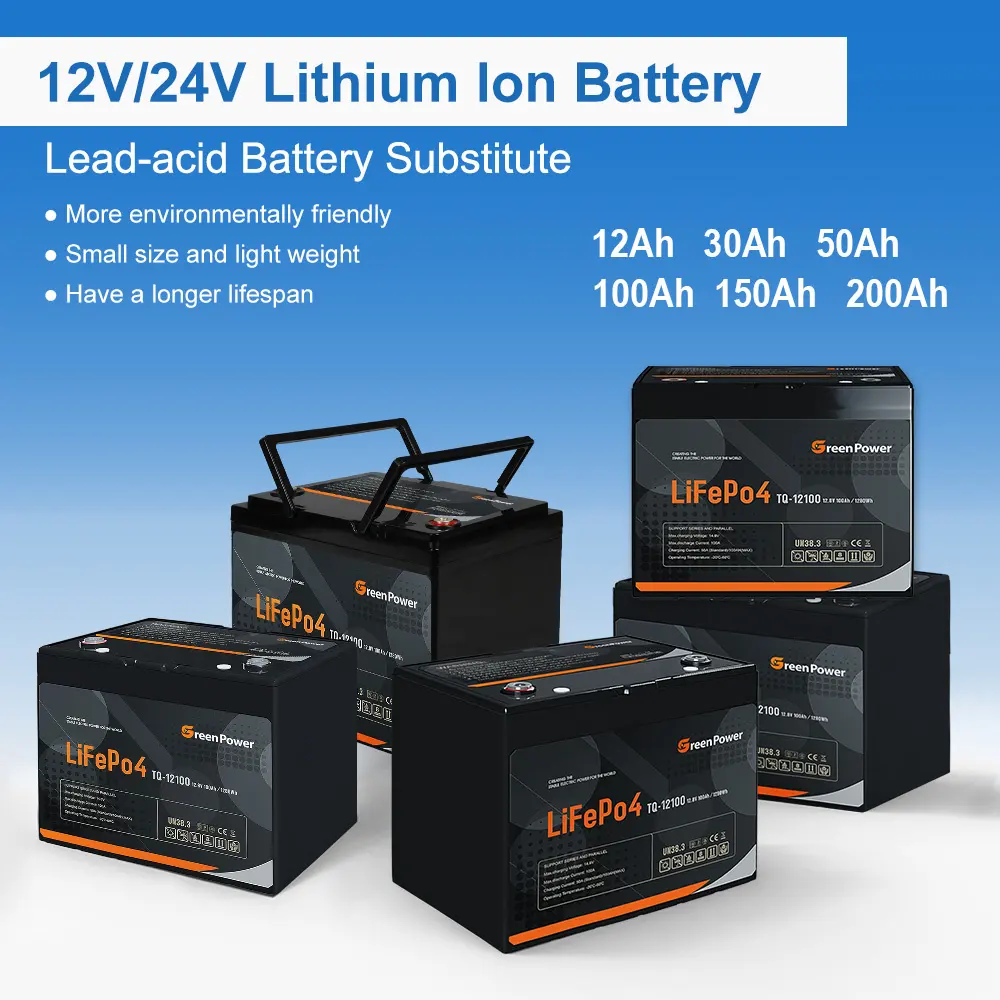Reliability of Lead Acid Batteries for Backup Systems
Proven Long-Term Performance in Power Outages
Lead acid batteries have been around for ages and proven themselves time and again as dependable power sources, especially when continuous electricity matters most. These old workhorses have been keeping things running smoothly for well over 100 years now, standing up to all sorts of emergency situations without missing a beat. Research shows they typically last about ten years give or take, even with pretty heavy duty cycles in real world applications. That kind of lifespan explains why so many critical operations still rely on them today. Hospitals need backup power to keep life support systems going, while data centers depend on them to protect valuable information during outages. The fact remains though, nothing beats good old fashioned lead acid when it comes to lasting through tough times without fail.
The reliability of lead acid batteries goes beyond what's written in textbooks. Real world evidence shows they work well in situations where failure isn't an option. Take hospitals for instance, where these tough little power packs keep lifesaving machines running when the grid fails. Data centers also count on them heavily, since even a brief power loss can crash servers holding valuable information. Looking at how these batteries perform day after day in such demanding environments makes it clear why so many industries continue to trust them for backup power needs despite newer alternatives on the market.
Robustness in Emergency Scenarios
Lead acid batteries have this great strength in terms of their physical durability and how they perform under stress, which really stands out during emergencies. These batteries are built tough enough to handle pretty rough situations without losing much power, so they work well as backup systems when things go wrong. Take weather extremes for example. A lot of battery types struggle in cold winters or hot summers, but lead acid keeps going strong regardless of what Mother Nature throws at it. That reliability makes all the difference when other power sources might fail just when we need them most.
Studies have shown these batteries hold up pretty well even when weather gets rough. Most industry professionals recommend including lead acid batteries as part of any good disaster recovery strategy because they just keep working when other things fail. When storms hit or something goes wrong with the grid, having backup power matters a lot. Lead acid options tend to be solid performers during those critical moments. They don't let people down when emergency services need them most, making them a smart choice for situations where consistent electricity simply cannot wait.
Cost-Effectiveness Compared to Alternatives
Lower Initial Investment Costs
For many companies still on tight budgets, lead acid batteries tend to be the wallet-friendly choice when compared against pricier lithium-ion alternatives. The upfront costs are simply much lower, so they work well for organizations operating under various spending constraints. According to some industry data we've seen, these traditional lead acid setups typically run around 30 to maybe even 50 percent cheaper than newer battery tech options. That kind of price difference really matters for smaller operations trying to get backup power systems in place without breaking the bank. A local manufacturing shop owner told us recently how switching to lead acid saved them thousands during installation, money they could redirect toward other business needs instead.
Maintenance Expenses Comparison
When it comes to maintenance costs, lead acid batteries tend to be more budget friendly in the long run. These old reliable batteries don't demand much attention beyond basic checks now and then, unlike their lithium cousins that come with all sorts of high tech requirements. Lithium batteries often need special handling because of their sophisticated internal workings, while lead acid units generally just want occasional TLC like topping off electrolyte levels and giving those terminals a good wipe down. Looking at the big picture across their entire life cycle, most studies show that lead acid batteries keep delivering better value for money year after year. That's why many companies still go with lead acid when they're trying to balance upfront expenses against what things will cost to maintain down the road.
Deep Discharge Capabilities for Extended Backup
Power Availability During Prolonged Outages
Lead acid batteries really shine when it comes to handling those deep discharges without much trouble, which means they keep important systems running even when there's been a long power outage. Take telecom companies or hospitals for instance, places where having consistent power isn't just nice but absolutely necessary for operations. Studies back this up too, showing that these old reliable batteries can actually hold up under heavy loads for quite some time. Think about what happens if a hospital loses power or a data center goes dark suddenly. The results could be disastrous. People who work in emergency response often tell stories about relying on lead acid batteries during blackouts that lasted three, four, sometimes even five full days straight. These real world experiences confirm what the specs already suggest.
Performance in Consistent Drain Scenarios
Lead acid batteries perform really well when there's a steady need for power over time, keeping their performance stable even after multiple uses and charging back up pretty fast. They work especially good in places where people keep drawing energy regularly, think about factories running machines all day long or big stores with lots of equipment going at once. Research shows these old fashioned batteries can get back to full charge much quicker than many alternatives, so they don't sit idle waiting to be used again. Most engineers will tell anyone listening that lead acid packs have amazing durability through repeated charge cycles, making them great picks for jobs needing constant access to electricity without interruption. Because of this reliability factor, lead acid remains a solid choice whenever someone needs dependable power that just keeps coming no matter what.

Temperature Tolerance in Critical Applications
Lead acid batteries work pretty well across a wide temperature range from about minus 20 all the way up to 50 degrees Celsius, which means they can handle lots of different environments out there. Their ability to function in such varied conditions makes them especially useful in places where temperatures go crazy, like the frozen north or scorching deserts. Equipment just keeps running when it matters most. Research indicates these batteries stay reliable even when temps swing wildly, something that really stands out compared to other battery types. For companies operating worldwide, this kind of performance across diverse climates becomes a major selling point.
Most battery makers will tell anyone who asks that how well a battery handles temperature changes really matters when it comes to making lead acid batteries last longer and work better. When these batteries stay within their ideal temperature zone, they don't break down as fast, something that makes all the difference for keeping them performing consistently month after month. For folks running backup power systems in places like hospitals or data centers, this temperature stability means the difference between reliable operation and unexpected failures. That's why many industrial users specifically look for batteries designed with good thermal management features built right into their construction.
Environmental Sustainability and Recycling
Lead acid batteries stand out when it comes to being environmentally friendly because around 97% of them get recycled each year according to industry reports. That puts them near the top of the list for products that actually get recycled globally, showing how seriously manufacturers take reducing their ecological footprint. Most parts inside these batteries can find new life either through reuse or repurposing, making their entire lifespan part of what's called a circular economy model. The benefits are twofold really conservation of raw materials happens while simultaneously cutting down on the mountain of waste that ends up sitting in landfills across the country.
Regulatory agencies point out something pretty important when it comes to lead acid batteries. Recycling these old batteries actually takes way less energy compared to making brand new ones from scratch. And what does this mean for our planet? Well, lower energy usage means fewer carbon emissions going into the atmosphere. That's one of those win-win situations we all should care about. When businesses choose recycling over disposal, they're not just following rules but contributing to something bigger than themselves. The same goes for regular folks who bring their used batteries to collection points instead of tossing them in landfills. Looking at things practically, proper recycling helps keep valuable resources out of waste streams and reduces pollution across multiple fronts. For the battery industry specifically, embracing these greener methods isn't just good PR anymore it's becoming essential for staying competitive in today's market landscape.
Compatibility With Legacy Infrastructure
Lead acid batteries have some real benefits because they work well with most current infrastructure setups. A lot of equipment was built with these batteries in mind from the start, so when it comes time to upgrade, there's no need to rip everything out and spend a fortune on complete system changes. Companies can actually swap in better power solutions pretty easily while keeping things running as normal during the process. For businesses looking to get the most out of what they already own instead of throwing money at brand new tech, this compatibility factor makes a big difference in both budget planning and operational continuity.
Businesses looking to upgrade their power systems find that lead acid batteries work really well with what they already have installed. Studies show companies save money on installation when they go with lead based systems because these batteries fit right into the old setup without needing lots of new parts. The fact that everything works together means operations keep running smoothly instead of grinding to a halt while waiting for big infrastructure changes to happen. Most shops report getting back up and running much faster after switching to lead acid solutions compared to other battery types.
Many industry professionals tend to suggest lead acid batteries when companies want to keep running their old systems but need better power capacity. When they match newer tech with what's already there, businesses get improved energy performance without tearing everything apart. This makes financial sense too since it saves money on big overhauls. Plus, it helps with environmental goals in the long run. Especially for those industries where the existing equipment works just fine most of the time but needs a little boost here and there to handle increased workload.
FAQ
Why are lead acid batteries preferred for backup systems?
Lead acid batteries are preferred for backup systems due to their reliability, long-term performance, cost-effectiveness, and compatibility with existing infrastructures. They offer robust solutions for critical applications, providing uninterrupted power during outages.
How do lead acid batteries handle extreme temperatures?
Lead acid batteries have a broad operational temperature range, from -20 to 50 degrees Celsius, making them suitable for extreme climates. This versatility ensures they maintain performance and reliability across various environmental conditions.
What makes lead acid batteries environmentally sustainable?
Lead acid batteries boast an impressive recyclability rate of approximately 97%. The recycling process is energy-efficient, leading to reduced carbon emissions and less environmental waste, aligning with sustainable practices.

